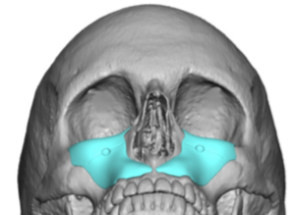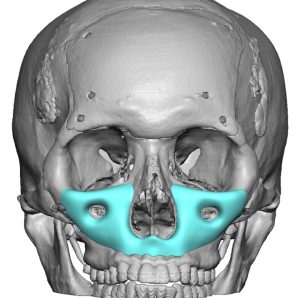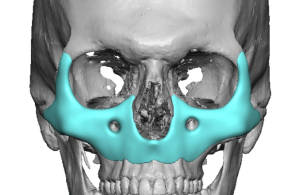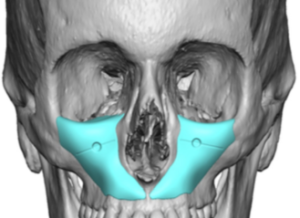The custom midface mask implant is an under appreciated form of aesthetic facial augmentation but one that has a very significant effect. It is based on the custom implant principle of total bone coverage of an aesthetic third of the face. For example the custom jawline implant covers or wraps around the entire lower third of the face. The custom forehead implant usually encompasses the entire upper third of the face from the brow bones to behind the frontal hairline. (or beyond) While there are custom implant designs that certainly do subtotal facial 1/3 coverage (e.g., chin, brow bone or just forehead), the most powerful and complete augmentation effect is from total coverage.
Similarly the middle third of the face can have total coverage to create a ‘LeFort’ like effect. This for those patients who have a flat or less projected midface from the infraorbital rims down to the maxillary alveolar region. This will not change the position of the teeth or occlusion obviously and some patients will have had or should have a LeFort I osteotomy first to correct a malocclusion or address obstructive sleep apnea if it exists.
While every midface mask implant is custom made and has its own unique design considerations there are some basic design patterns. This differ by whether they involve the cheekbones or not and whether the design needs to cross the premaxillary region.





The midface mask implant is unique amongst all custom facial implants because of two anatomic features. First it is the only implant design that deliberately encircles a nerve as part of its design. For a complete midface augmentation effect this has to be done and is more the need to do so than for any other specific purpose. Secondly it is the only custom facial implant in which it covers a largely bony concave surface. All other facial bone surfaces are either convex or flat. This poses some challenges in understanding how to design it but also allows it to have a powerful augmentative effect as well.
Dr. Barry Eppley
World-Renowned Plastic Surgeon






